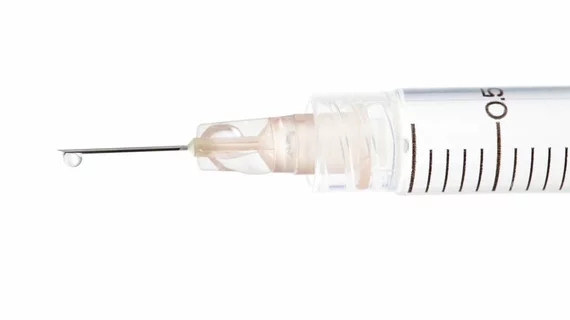Injecting opioids elevates risk for infective endocarditis
The risk of infective endocarditis rises alongside concomitant use of injected opioids, a team of researchers in Ontario, Canada, has found.
It’s well-known that opioid prescriptions are on the rise globally, first author Matthew A. Weir, MD, MSc, and colleagues wrote in the Canadian Medical Association Journal Jan. 28, and injecting the medication—a popular method among addicts looking for a “quick fix”—increases the risk of contamination and blood-borne pathogens.
The authors said they’ve noticed an increase in cases of injection-related infective endocarditis at their hospital, and there are two main culprits: oxycodone, typically sold under the brand name OxyContin, and hydromorphone, branded commonly as Exalgo or Dilaudid. Both are opioids and both are highly prevalent in developed societies, but oxycodone might be cleaner from a safety standpoint.
“When hydromorphone is injected, the injection equipment is frequently reused and shared with others because residual drug is believed to remain in the equipment, but these contamination-prone practices are not observed when people inject traditional controlled-release oxycodone,” Weir, an adjunct scientist for the Institute for Clinical Evaluative Sciences, et al. wrote. “Therefore, we suspected that an increase in hydromorphone use could be associated with an increase in infective endocarditis related to injection drug use.”
In Canada, the original formula for Purdue Pharma’s OxyContin was taken off the market in the fourth quarter of 2011 to make room for OxyNEO, the company’s extended-release, reportedly tamper-resistant alternative to the highly addictive drug. Weir and colleagues hypothesized the impetus for using hydromorphone would increase after conventional OxyContin was no longer available, pushing rates of risky drug use.
The researchers combed five Canadian healthcare databases for their retrospective analysis, which compared the quarterly risk of admissions for infective endocarditis to changes in opioid prescription rates between 2006 and 2015. Before the intervention point, which was established as the last quarter of 2011, the team observed a mean of 13.4 injection-related endocarditis admissions per quarter.
After OxyContin was replaced by OxyNEO, that admissions rate jumped to 35.1 admissions per quarter. However, the authors said the increase didn’t correlate directly with the intervention point; rather, the risk seemed to increase earlier and in parallel with a prior rise in hydromorphone prescriptions. While hydromorphone represented 16 percent of all opioid prescriptions in 2006, it made up 53 percent of prescriptions by the end of the study.
“We observed a substantial increase in the risk of infective endocarditis among people who inject drugs, which is associated with hydromorphone’s increasing share of the prescription opioid market,” Weir and co-authors wrote. “Although our observations do not support our hypothesis that the loss of controlled-release oxycodone increased the use of hydromorphone, they do support our suspicion that hydromorphone may be playing a role in the increasing risk of infective endocarditis.”
The team noted their inability to establish a causal relationship between hydromorphone use and infective endocarditis was a limitation of the study.
“Although our data show a compelling temporal association between hydromorphone use and infective endocarditis, further research is required to make a case for causation,” they said. “This work should endeavor to draw closer links between exposure and outcome, using individual prescription drug exposure, urine toxicology results or sampling of used drug injection equipment.”

